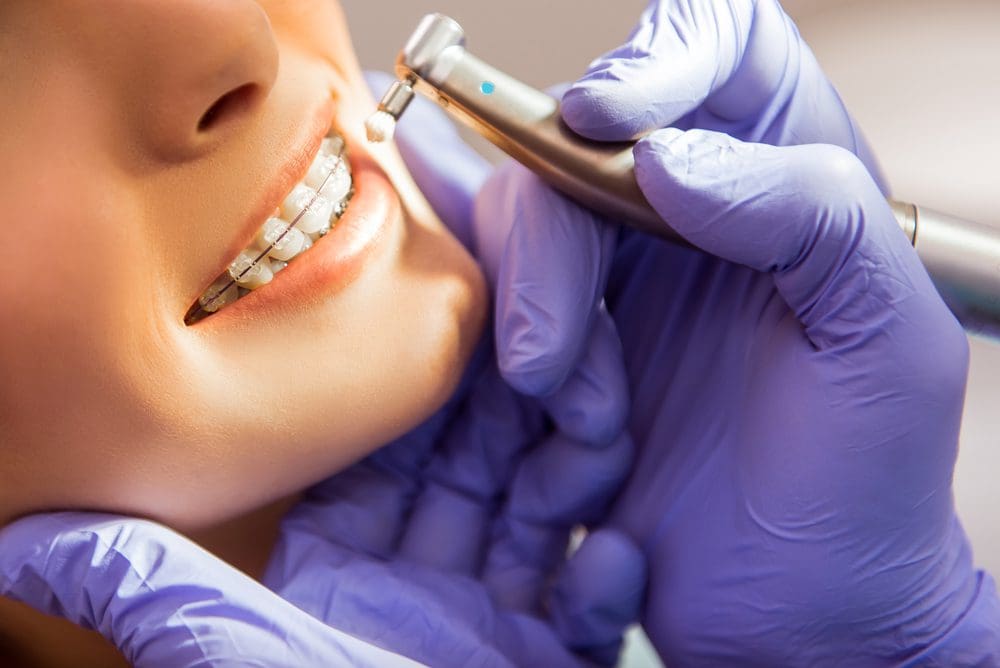How Cumming Orthodontics Addresses Common Braces and Invisalign Problems
How Cumming Orthodontics Addresses Common Braces and Invisalign Problems
Blog Article
Comprehensive Overview to Orthodontics Procedures for Fixing Dental Imbalances
In the world of orthodontics, the journey to achieving a completely aligned smile entails a myriad of procedures tailored to fix dental imbalances. From conventional braces to unnoticeable aligners and even surgical options, the field of orthodontics offers a variety of solutions to attend to varying degrees of oral abnormalities. Comprehending the intricacies of each procedure, including their systems, advantages, and possible disadvantages, is important in making informed decisions about one's orthodontic treatment. As we browse via the extensive guide to orthodontic procedures for remedying dental imbalances, the intricate details of each method will unravel, clarifying the path towards a unified and useful oral alignment.
Orthodontic Procedures Review

Along with conventional braces and clear aligners, orthodontists may additionally suggest various other interventions like headgear, palatal expanders, or retainers to deal with specific placement issues (aligners). These treatments are tailored to each person's special needs and may entail a combination of therapies to achieve the wanted results. Normal adjustments and surveillance are important components of orthodontic treatment to make certain development gets on track and to make any needed modifications in the process. By undergoing orthodontic procedures, patients can not just accomplish a straighter smile however additionally improve their overall dental health and function.
Standard Dental Braces: Exactly How They Function
When considering orthodontic therapies for dental imbalances, conventional dental braces stand out as a time-tested approach for fixing teeth positioning. Standard braces consist of braces, wires, and bands that function together to use continuous stress on the teeth, gradually moving them right into the desired positioning.
As stress is applied to the teeth through the dental braces, the bone bordering the teeth is reshaped to sustain the brand-new tooth placements. Patients will need routine modifications at the orthodontist's workplace to ensure the braces continue to apply the appropriate pressure for efficient teeth activity.
Unseen Aligners: Benefits And Drawbacks
These clear, custom-made trays are practically invisible when used, making them an attractive choice for individuals looking for a much more visually pleasing orthodontic treatment. Individuals can eliminate the aligners prior to consuming or brushing their teeth, reducing the risk of food getting stuck in the device and streamlining the cleaning process.

Surgical Orthodontic Options
Surgical treatments in orthodontics existing viable choices for attending to intricate oral misalignments that may not be properly resolved through conventional orthodontic treatments. While invisible aligners and conventional braces can fix lots of orthodontic problems, specific situations need surgical intervention to accomplish ideal results. Surgical orthodontic options are usually suggested for severe malocclusions, significant jaw disparities, and instances where the underlying bone framework requires adjustment to accomplish proper alignment.
One common surgical orthodontic procedure is orthognathic surgical treatment, which includes repositioning the jaws to correct useful concerns such as problem chewing or speaking. This surgical treatment is typically carried out in collaboration with an orthodontist that aids align the teeth before and after the treatment. Surgical orthodontics may also entail procedures to expose influenced teeth, eliminate excess gum cells, or improve the jawbone to create an extra unified facial account.
Before considering surgical orthodontic choices, people go through a comprehensive evaluation to establish the requirement and potential benefits of such treatments. cumming orthodontist. While surgical treatment might seem overwhelming, it can dramatically improve both the feature and aesthetic appeals of the smile in instances where traditional orthodontic therapies fall short
Retainers and Post-Treatment Treatment

Post-treatment care includes following the orthodontist's directions diligently. This may consist of correct oral hygiene techniques, going to follow-up consultations, and putting on the retainers as recommended. Failure to adhere to post-treatment care directions can cause regression, where the teeth progressively return towards their initial placements. Consistent retainer wear, good oral health, and regular sites dental exams are important for preserving the outcomes attained via orthodontic surgery and making sure the lasting stability of the fixed dental positioning.
Final Thought
Finally, orthodontic procedures provide various options for fixing dental misalignments. Traditional dental braces make use of steel brackets and wires to move teeth right into appropriate alignment. Invisible aligners provide an even more very discreet alternative but may not be ideal for all cases. Surgical orthodontic options are readily available for extra serious misalignments. Retainers are commonly made use of post-treatment to keep the new alignment. Overall, orthodontic treatments can efficiently improve oral health and wellness and aesthetic look.
As we browse through the detailed guide to orthodontic treatments for correcting oral misalignments, the complex details of each technique will certainly unfold, losing light on the path towards a harmonious and practical oral alignment. - braces
One of the most typical orthodontic therapies is the use of dental braces, which are composed of metal braces and cords that apply gentle stress to gradually move teeth right into the desired setting.When taking into consideration orthodontic treatments for oral imbalances, this website traditional braces stand out as a reliable method for remedying teeth placing. Additionally, unnoticeable aligners might not be ideal for complex orthodontic problems that call for more considerable teeth motion, as they are generally suggested for light to modest instances. Retainers are customized orthodontic gadgets created to hold teeth in their corrected positions after the completion of orthodontic treatment.
Report this page